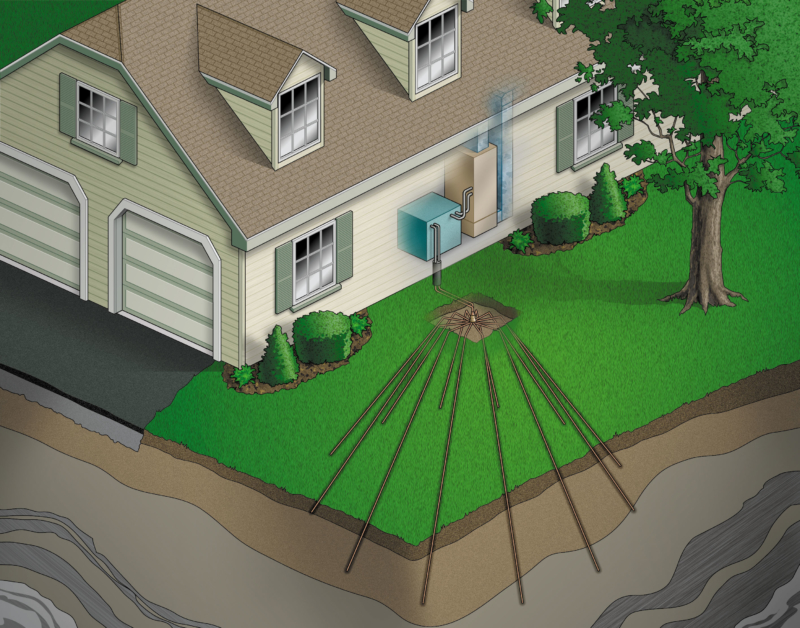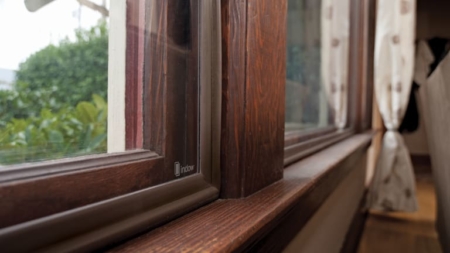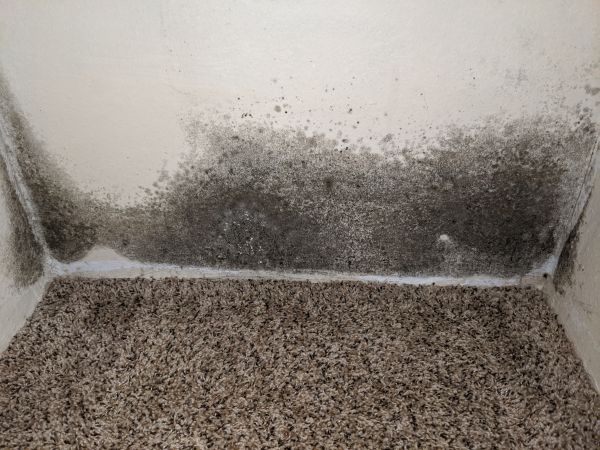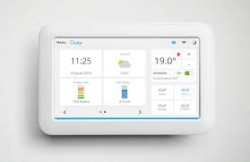A geothermal heat pump, also known as a ground-source heat pump, is a central heating and/or cooling system that uses the constant below-ground temperature of soil or water to heat and cool a building. In the cooler months, this system draws heat from the earth or water and brings it inside the building using a heat exchanger. In the summer, the process reverses and acts as a heat sink to help keep a building cool inside. Some systems can also provide hot water which further increases energy efficiency.
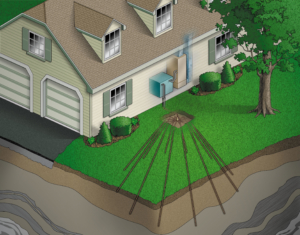
Direct exchange system
Geothermal heat pumps take advantage of a renewable resource: the constant temperature (heat) underground from soil and water. They can be more efficient than an air source heat pump because the ground maintains an almost constant temperature of 54 degrees.
Typical geothermal heat pumps move fluid through underground pipes which absorb the earth’s temperature. The fluid is then used to heat or cool the building. There are three different system designs which are classified by fluid and layout and called direct exchange, closed loop, and open loop.
Direct exchange systems circulate refrigerant underground through a single loop of copper tubing. There is no direct interaction between the fluid and the earth, but the name refers to heat transfer between the refrigerant loop and the ground without the use of an intermediate fluid. Direct exchange is the oldest type of geothermal heat pump systems.
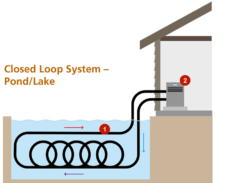
(source: pge)
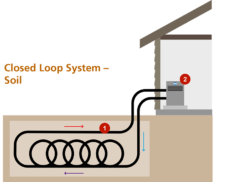
Closed loop systems are the most common type of system and involve two loops. The primary refrigerant loop is contained in the appliance cabinet where heat is exchanged with a secondary water loop that is underground. The secondary loop is usually made of high-density polyethylene pipe and contains a mixture of water and anti-freeze (propylene glycol, denatured alcohol, or methanol). Closed loop systems must have a heat exchanger between the two loops. Some system manufacturers integrate the pumping and valving within the heat pump while some have a separate ground loop fluid pump pack.
Open loop systems use natural groundwater. The secondary loop pumps water from a well or body of water into a heat exchanger inside the heat pump. Heat is added or extracted by the primary refrigerant loop and the water is returned to a separate irrigation trench, injection well, body of water, or tile field. The water chemistry is uncontrolled and therefore the system may need to be protected from corrosion by using different metals in the heat exchanger and pump. If the water contains high levels of minerals, salt, iron bacteria, or hydrogen sulfide, a closed loop system is typically preferable.
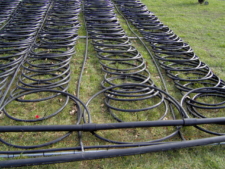
Open Loop System
Advantages of geothermal heat pumps
- Geothermal heat pumps use up to 72 percent less energy per year than electric resistance heating with standard air conditioning.
- Uses only one unit of electricity to move up to five units of heating or cooling from the earth to a building.
- Very quiet without any noisy outside equipment to bother building occupants or neighbors.
- Zero emissions.
- Heat exchange systems can last for decades.
- Embraced by LEED and other green building organizations.
- When cooling is needed in the summer months, some systems can be set up to provide hot water to building occupants.
- Efficiencies of 300-600 percent on the coldest winter nights compared to 240 percent efficiency for a standard source heat pump. (Source: U.S, Department of Energy)
Disadvantage of geothermal heat pumps
- Traditionally more costly than other systems, although there are recent improvements in installation techniques and prices are decreasing.
According to Portland General Electric, good applications for geothermal heat pumps include homes that:
- Need energy-efficient heating and cooling
- Have forced-air or radiant hydronic wall registers
- Are being build and will enable radiant hydronic piping in the floor or ceiling
- Aren’t practical locations for above-ground A/C or outdoor heat pumps
- Have access to ground water or surface water
Resources and further reading:
Oregon.gov – Geothermal Heat Pumps
PGE Ground Source Heat Pump Info
National Geographic – 10 Myths about Geothermal Heating and Cooling

